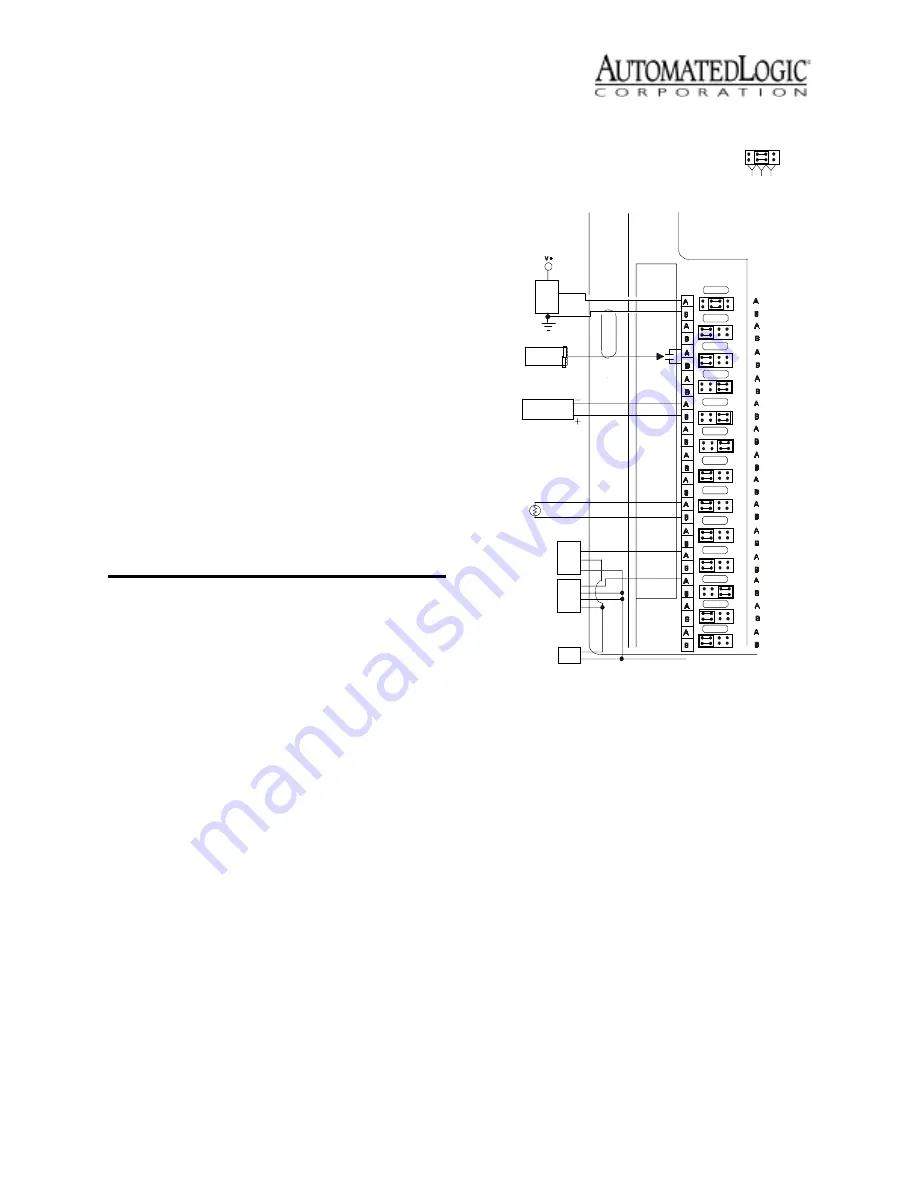
Revised 4/3/00 • M220nx
6
© 2000 Automated Logic Corporation
• 0 to 5VDC: The output impedance of a 0
to 5VDC source must not exceed
10kohms. The input impedance of the
M220nx is approximately 1Mohm.
• 0 to 20mA: The input resistance on the
“A” input is 250 Ohms. The “B” terminal
supplies a voltage source to power the
4-20mA transducer. The “B” terminal is
capable of supplying 18 to 24VDC, but
the total current of both “B” terminals
must not exceed 40mA. If the voltage
measured from the “B” terminal to Gnd
is less than 18VDC, you need to use an
additional external power supply.
• Dry Contact: A 5VDC wetting voltage is
used to detect contact position. This
results in a 0.5mA maximum sense
current when the contacts are closed.
The M220nx accumulates up to ten input
pulses per second.
1. Be sure the M220nx’s power is off before
wiring any inputs or outputs.
2. Connect the input wiring to the screw
terminals on the module as shown in
Figure 4.
NOTE
If a 4-20 mA sensor uses an
external 24VAC power supply, connect
one leg of the 24VAC supply to the module
ground.
3. Set the configuration jumper for each
input to indicate the type of input used.
Make sure the jumper is positioned
correctly, and be sure to grip the jumper
by the sides only. See Figure 5 on page 7.
4. For each input, enter the channel number,
offset, and gain on the Function Block’s
Parameter page in SuperVision. Valid
channel numbers are listed in “Channel
Numbers” on page 7.
5. To verify each input’s operation, have
each sensor create a known value and
Table 2. Input wiring restrictions
Input
Maximum
Length
Minimum
Gauge
Shielding
0 to 5VDC
50 feet
15 meters
24AWG
shielded and
grounded to
module’s
“
B
”
or Gnd
terminal
Thermistor
Dry contact
50 feet
15 meters
24AWG
shielded and
grounded to
module’s
“
B
”
or Gnd
terminal
0 to 20mA
150 feet
46 meters
20AWG
unshielded
Figure 4. Input Wiring
PW R
PW R
PW R
OUT
OUT
GND
GND
GND
0-5VDC
DRY
CONTACT
PASSIVE
TRANSDUCER
4-20mA
12V or 24V
LOOP INPUT
THERMISTOR
3 WIRE
4-20mA
ISOLATED AC
or DC POWER
SUPPLY
4 WIRE
4-20mA
OUT +
OUT -
OUT +
OUT -
TO MODULE GND
Universal Input
Mode Select
0-
5
V
D
C
0
-20mA
Th
e
rm
ist
o
r
Dr
y
C
onta
c
t
Inputs
5V Max, 20mA Max









